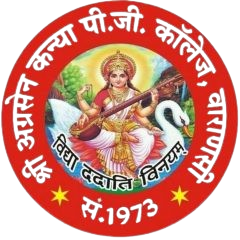Maharaja Agrasen
Maharaja Agrasen, the Icon of non-violence and peace was revered by one and all. His highness was an embodiment of sacrifice, compassion, peace and prosperity. To put in nutshell, he was a socialist in the real sense of the word. Prince Agrasen in his youth was adored by the public for these qualities. During his regime he followed the policy of non-discrimination and thus endeared himself to his subjects.
Prince Agrasen vibrated with energy and charm. When King Nagraj held a Swyamvara for his daughter Princess Madhavi, Prince Agarsen’s enchanting beauty and splendour flashed in the assembly of Princes’ and princess Madhavi chose him as her husband by garlanding him. This marriage gave way to coming together of two different cultures as Prince Agarsen was Suryavanshi and Princess Madhavi was a Naagvanshi. Indra, the king of Devas had been smitten by the overwhelming beauty of Princess Madhavi and had planned to win her in marriage. Now that his plan was defeated, he became furious and wanted to revenge upon Prince Agarsen. Indra, the lord of rain caused famine in Pratap Nagar Kingdom. Emperor Agarsen waged war against Indra and vanquished Indra’s forces and put them to flight. Indra then approached Narad (the divine sage) to be the mediator and thus peace was at last established between them.
Agrasen started a severe penance to propitiate Lord Shiva in the city of Kashi. Pleased with the penance of Agrasen, Lord Shiva appeared and advised him to propitiate Goddess Mahalakshmi. Maharaj Agrasen again started meditating on Goddess Mahalakshmi, who appeared before him. Goddess Mahalakshmi then blessed Agrasen and suggested that he take up the Vaishya tradition of business for the sake of prosperity of his people. She then asked him to found a new kingdom and promised that she would bless his descendants with prosperity. So he gave up his Kshatriya tradition.
Maharaj Agrasen, performed many Yagnas (sacrifice) for the prosperity of his people. In those days, performing a yagna was a symbol of prosperity. During one such yagna, Maharaj Agrasen noticed that a horse that had been brought to be sacrificed was trying hard to get away from the sacrificial altar. Seeing this Maharaj Agrasen was filled with pity and then thought as to what prosperity can be achieved by sacrificing mute animals. The King discussed it with his council of ministers who suggested that the idea of non-violence may be understood as a sign of weakness by others and grab the opportunity to attack Agroha and over throw Him. But, Maharaja Agrasen was unyielding and proclaimed that there should be no violence and sacrifices of animals in his kingdom.
Maharaj Agrasen proceeded to conduct 18 Maha Yagnas. He then divided his kingdom among his 18 children and established the 18 gotras after the guru’s of each of his children. These same 18 gotras today are like the eighteen chapters of the Bhagavadgita, even though they are different from each other, they are still related to each other to form the whole. Under this arrangement, Agroha prospered very well and flourished. In the latter part of his life, Maharaj Agrasen nominated his eldest son Vibhu to the throne and took up the Vanaprasth Ashram.
